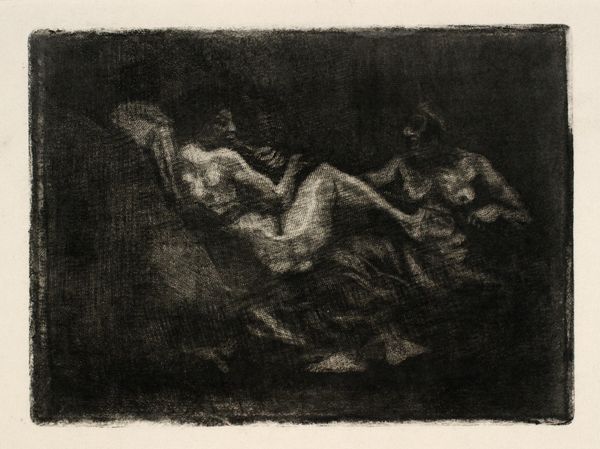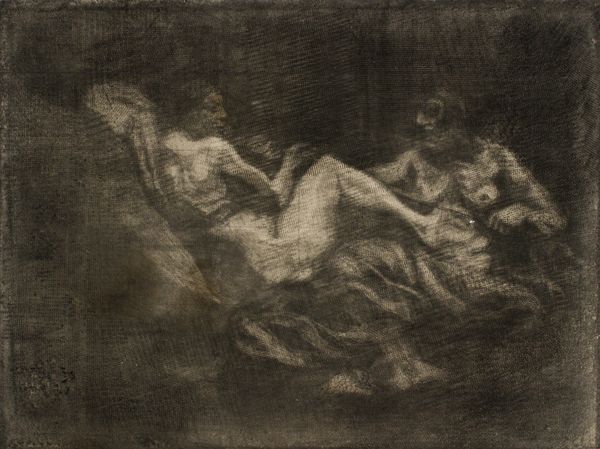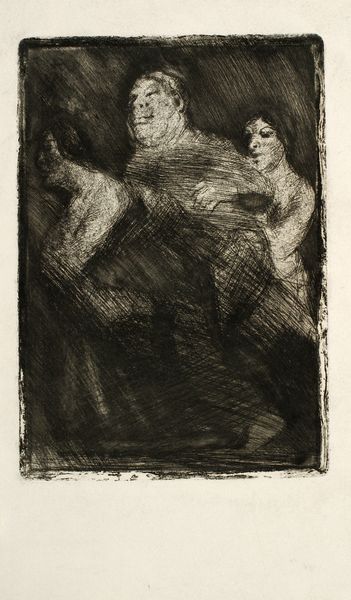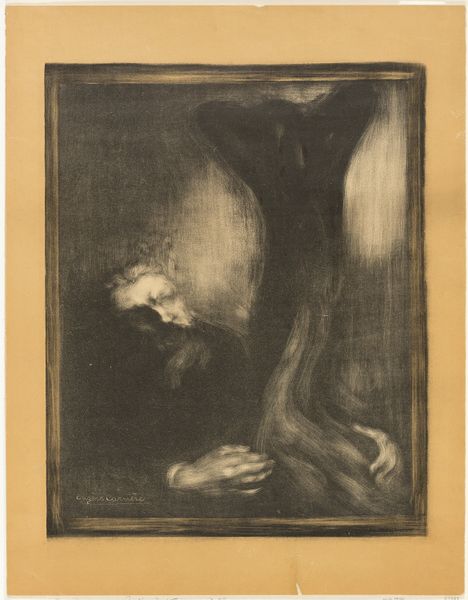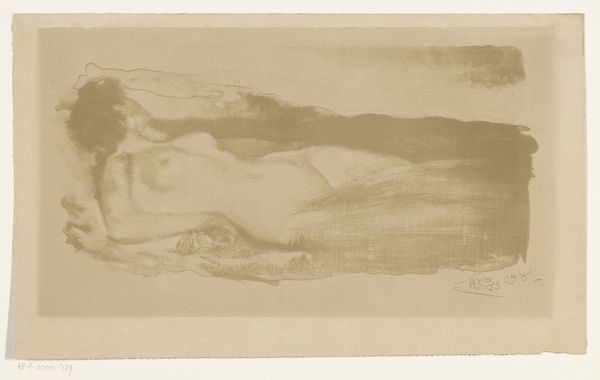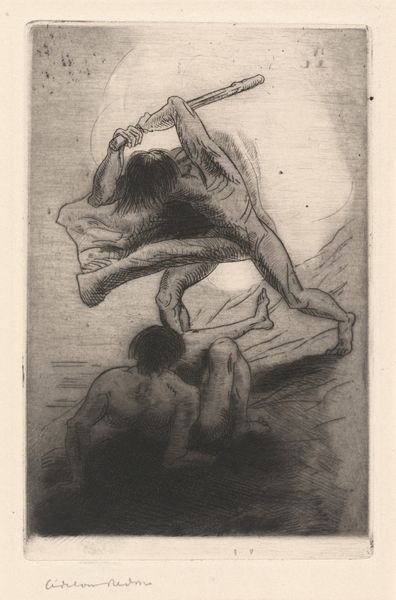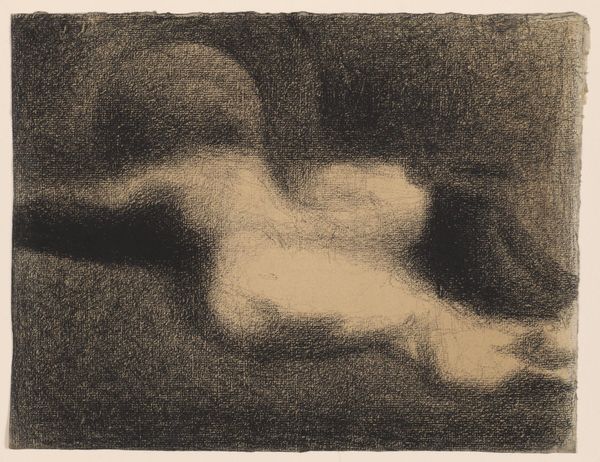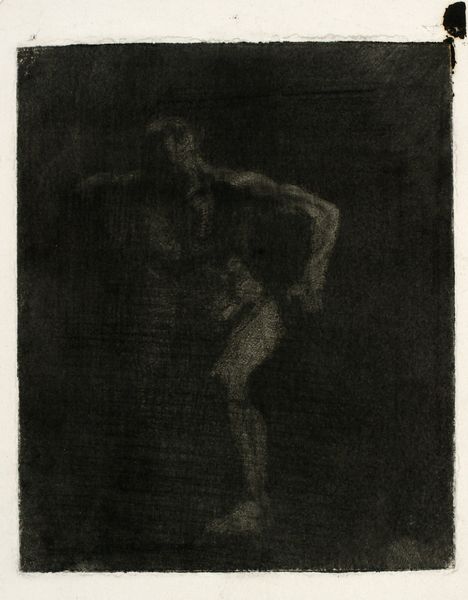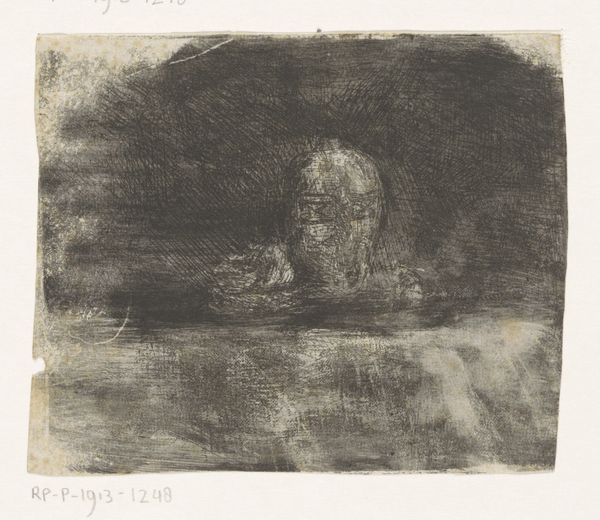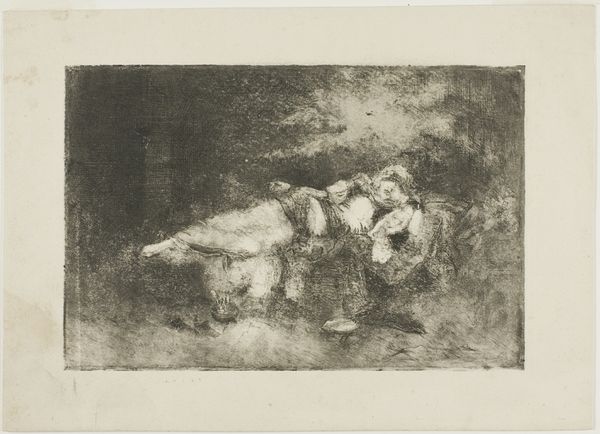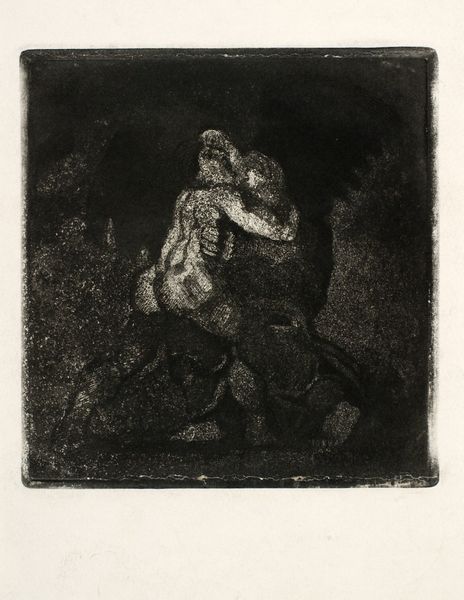
aquatint, drawing, print, charcoal
#
aquatint
#
pencil drawn
#
drawing
# print
#
charcoal drawing
#
figuration
#
symbolism
#
charcoal
#
charcoal
#
nude
Dimensions: 115 mm (height) x 168 mm (width) (plademaal)
Curator: Looking at this ethereal piece, "Zephyr bortfører Psyche," which translates to "Zephyr Abducting Psyche," was completed in 1909. It's a print made with aquatint techniques, drawing and charcoal, by Oluf Hartmann and part of the collection at the Statens Museum for Kunst. Editor: Woah, that's a lot. My first thought? Dreamy, almost hazy. It’s like seeing a half-forgotten memory rendered in charcoal. Are those figures floating or falling? There’s such a weightlessness to the composition. Curator: Indeed, the ethereal quality is prominent, in the symbolism style. Hartmann depicts a classical subject, referencing the Greek myth of Psyche, abducted by Zephyr, the god of the west wind. The choice of aquatint gives the image a soft, atmospheric effect. Editor: It really does lend that "dream state" feel to it. And "abduction" is quite dramatic, isn't it? What strikes me is Psyche seems...almost relaxed. Not struggling or terrified, just drifting. Perhaps it speaks to her acceptance, or destiny. There is a certain intimacy too; almost romantic in mood, yet... it makes you question what has really occurred in the original telling of this story. Curator: That ambiguity might be deliberate. Symbolism often explores psychological states rather than literal narratives. The art movement of the time offered artists like Hartmann to investigate the realm of emotions and explore deeper meaning, hidden underneath well known themes. The viewer is left to interpret Psyche's state of mind, focusing not on action, but internal response. It challenges traditional notions of art, doesn’t it? Editor: Absolutely! And the limited palette—that smoky charcoal— it emphasizes the intimacy, too, as if this dramatic moment is just between them. It avoids so much overt sentimentality or melodrama because you’re focusing only on shape and shadow and this story about transformation, inner conflict, human relations, which, in a way is more resonant to viewers as well. Curator: It’s a work that continues to resonate because it embraces the ambiguity of human emotion, challenging the role of imagery, moving beyond simple representations and provoking more deeper understanding about complex history through modern interpretations. Editor: Yeah, and even today, those murky depths offer a space where our own personal narratives and feelings about love and trust get mixed with the mythological. That's the magic right there, I think.
Comments
No comments
Be the first to comment and join the conversation on the ultimate creative platform.
